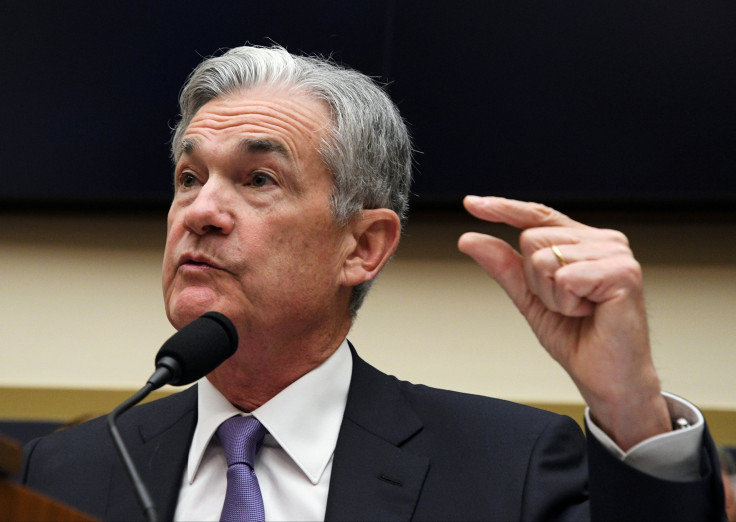Dow Suffers Worst Day Since May Despite Fed Rate Cut, Powell's Announcement To Blame

The U.S. Federal Reserve on Wednesday did what it was widely expected to do -- cut interest rates by the bare minimum of 25 basis points. But Wall Street took it badly after the Fed indicated this cut isn’t the start of a trend.
The Dow Jones Industrial Average reacted to Fed’s hint future cuts are questionable by shedding over 400 points in intraday trading, its worst daily drop since May 31. The S&P 500 also posted its biggest one-day decline since May 31, while the NASDAQ Composite recorded its biggest one-day drop since late June.
The Fed’s Federal Open Market Committee (FOMC) reduced the target range for its overnight lending rate to 2 percent to 2.25 percent from the previous level. In its first rate cut since December 2008, the Fed said “implications of global developments for the economic outlook as well as muted inflation pressures” were behind its decision.
Wall Street wasn't thrilled, however, when Fed Chairman Jerome Powell said the rate cut doesn't mean the FOMC will follow up with an aggressive rate-reducing regime. Powell referred to Wednesday's cut simply as a “midcycle adjustment,” meaning further rate cuts later this year aren’t a done deal.
He also said the reduction is the latest move in a policy transition that started with the Fed’s last hike in December 2018.
"We are thinking of it as a mid-cycle adjustment to policy," said Powell during the press conference after the FOMC meeting. "I'm contrasting it with the beginning of a lengthy cutting cycle."
The Dow closed 333.75 points lower Wednesday, or 1.2 percent at 26,864.27. It fell by as much as 478 points at one point after Powell’s remarks. The S&P 500 lost 1.1 percent to close at 2,980.38. The NASDAQ Composite shed 1.2 percent to 8,175.42.
The market initially interpreted the Fed's statement about the rate cut to mean more cuts are coming.
“The stock market seemed disappointed with Powell’s performance, perhaps because while Powell did not suggest this was a ‘one-and-done’ cut, there was no overt messaging that a September cut is guaranteed,” said Don Ellenberger, senior portfolio manager at Federated Investors, according to CNBC.
Powell insisted any analysis of the 25 basis point cut take into account the Fed’s past actions.
“That refers back to other times when the FOMC has cut rates in the middle of a cycle and I’m contrasting it there with the beginning of a lengthy cutting cycle,” noted Powell.
“That is not what we’re seeing now, that’s not our perspective now. You have to look at not just the 25 basis-point cut, but look at the committee’s actions over the year.”
He said the Fed started off the year expecting some rate increases but it then moved to a “patient setting for a few months and now we’ve moved here.”
Analysts said these comments triggered the sell-off that led Wall Street to its lows for the day and for the last two months.
The Dow recouped part of its losses after Powell clarified his previous statements. Powell said he meant the Fed could cut rates again soon, but the cycle of cuts won't last for a long period of time.
"What I said was it's not the beginning of a long series of rate cuts," said Powell. "We'll be taking a somewhat more accommodative stance over time."
Despite Wednesday’s drop, Wall Street will end July smiling. The S&P 500 rose 1.3 percent, the NASDAQ was up 2.1 percent while the Dow improved 1 percent in July .
© Copyright IBTimes 2024. All rights reserved.



















